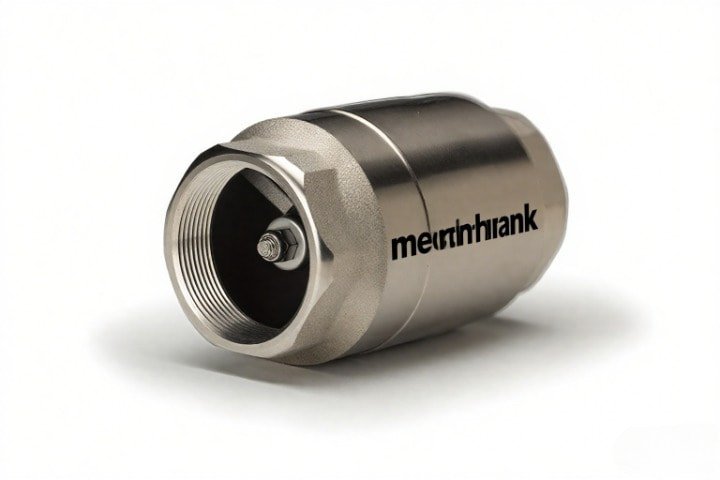A check valve is also called a non-return valve or one-way valve. It lets fluid move in just one direction. You use it to stop fluid from going backward. It helps protect pumps and pipes from damage. Many industries use check valves because they work by themselves. They do not need anyone to control them. The table below shows other names for check valves in different places:
Alternative Name | Description / Usage |
|---|---|
Used to make less noise and stop water hammer | |
Dual plate wafer check valve | Also called butterfly check valve |
Non-slam check valve | Made to stop quick closing |
Shows what it does | |
One-way valve | A common name used everywhere |
Key Takeaways
Check valves let fluid move in one way only. This keeps pumps and pipes safe from harm by backflow.
They work on their own. They open when fluid goes forward. They close fast if the flow tries to go backward.
There are many types of check valves for different jobs. Swing valves are good for clean water. Ball valves work better with dirty fluids.
Pick the right valve for your system. Match its material, size, and pressure rating. Make sure you put it in the right flow direction.
Check and take care of valves often. This helps you find problems early. It stops leaks, noise, and big damage to your system.
What Is a Check Valve
A check valve is a type of valve that allows fluid to flow in one direction only, preventing backflow. It is commonly used in various piping systems to ensure the proper flow of liquids or gases.
Definition
A check valve is a device that lets fluid, like water or gas, flow in only one direction. You often see it called a non-return valve or a one-way valve. This valve works automatically. You do not need to turn it on or off. When you install a check valve in a pipe, it acts like a gate that opens for flow in one direction and closes if the flow tries to go backward.
Inside a check valve, you find several important parts. These include a poppet, a spring, an O-ring, and a casing. The poppet and O-ring touch each other before any flow starts. The spring keeps the valve closed until enough pressure builds up. When the pressure gets high enough, the O-ring lifts, and the poppet moves, letting fluid pass through. If the pressure drops, the spring pushes the poppet and O-ring back to their starting position, sealing the valve again.
Tip: You do not need to control a check valve by hand. It responds to changes in pressure all by itself.
Function
You use a check valve to stop backflow in a system. Backflow happens when fluid tries to move in the wrong direction. This can damage pumps, pipes, or other equipment. The check valve protects your system by acting as a one-way gate.
Here is how a check valve works to prevent backflow:
The valve opens when fluid flows forward with enough pressure.
The spring or hinged part inside the valve keeps it closed until the forward flow pushes it open.
If the flow reverses, the pressure on the other side forces the valve to close.
The valve seals tightly, stopping any fluid from going backward.
You find different types of check valves, such as swing and spring types. A swing check valve uses a hinged disc that swings open with forward flow and closes when flow reverses. A spring check valve uses a spring to keep the valve closed until the forward pressure is strong enough to open it. Both types work without manual help and need little maintenance.
Check valves usually open at a certain minimum pressure, called cracking pressure. This pressure is often between 1 and 5 PSI. If the pressure drops below this level, the valve closes again. You should know that check valves can wear out over time, especially if debris gets inside or if water hammer occurs. For most low-risk situations, a check valve gives you a simple way to stop backflow.
How Does a Check Valve Operate?
A check valve operates by allowing fluid to flow in one direction while preventing backflow. It automatically opens with forward flow and closes if there is reverse flow, ensuring unidirectional movement.
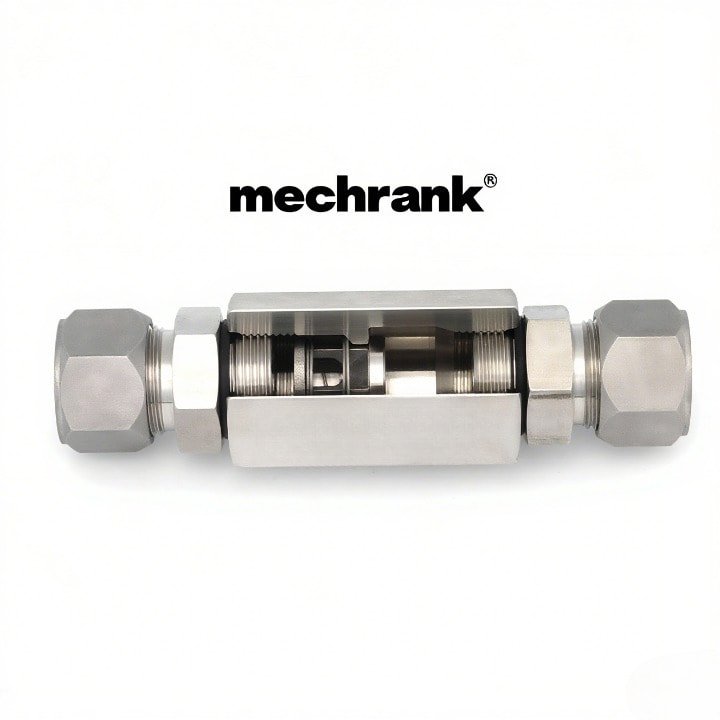
How It Works
A check valve works like a one-way door for fluids. When you put it in a pipe, it opens if fluid moves the right way. If the fluid tries to go back, the valve shuts fast to stop it. This keeps pumps and pipes safe from harm.
The check valve has simple parts like a disc, ball, or flap. These parts move when fluid pushes on them. Some valves have a spring to help them close faster. Spring-assisted valves, like split disc or nozzle types, react fast to flow changes. Many are made to close in about 0.3 seconds. Fast closing helps stop pressure spikes and valve slam. Valve slam can make loud sounds and cause damage.
Note: How fast a check valve closes depends on its design and how fast the fluid moves. If it closes too slow, you might get pressure spikes or water hammer. Engineers sometimes add dashpots or counterweights to control how fast it closes and protect the system.
Check valves can have problems like leaks, getting stuck, or wearing out. Sometimes the flap gets stuck open or closed. You might hear strange sounds, see leaks, or feel shaking. If you ignore these signs, your equipment could get damaged, or water hammer could happen. It could even let bad stuff into your system. Checking and fixing the valve often helps you find problems early. Acting fast can stop up to 80% of damage from check valve failures.
Here are some common ways check valves can fail:
Leaks you can see or inside the valve
Flap getting stuck open or closed
Parts wearing out, bending, or getting loose
Not stopping backflow
Strange sounds or shaking
If you see these problems, fix them right away. A check valve keeps your system safe, but if it breaks, your system could be in danger.
Cracking Pressure
Cracking pressure is an important part of every check valve. It tells you the lowest pressure needed at the inlet to start opening the valve. This lets fluid begin to move through. You measure cracking pressure in psi, bar, or kPa. This number does not mean the valve is all the way open. It just shows when you first see steady flow.
To find the cracking pressure, you can do a simple test. Raise the air pressure on the inlet side while the valve is underwater. Watch for the first steady bubbles at the outlet. The pressure at that time is the cracking pressure.
Most check valves in water systems have cracking pressures between 3 and 5 psig (0.21 to 0.34 bar). Valves with higher cracking pressures close tight because of the spring. Valves with lower cracking pressures need more back pressure to seal well. Picking the right cracking pressure is important. If it is too high or too low, you might get valve chattering or the valve might not close all the way.
Tip: Always check the cracking pressure before picking a check valve for your system. The right value helps you avoid losing pressure and keeps your system working well.
What Are the Different Types of Check Valves?
Check valves, or one-way valves, control fluid flow direction. The main types are swing, lift, ball, diaphragm, and stop-check valves.
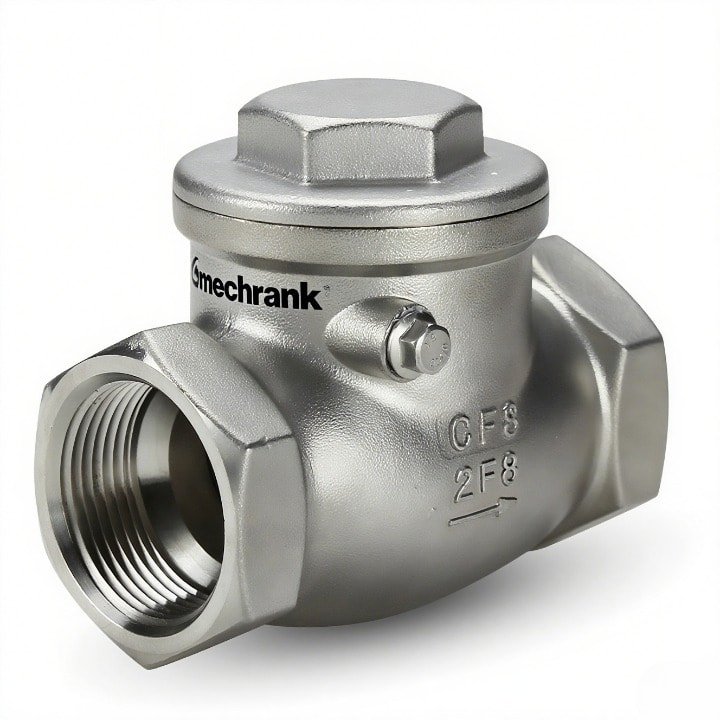
When you choose a check valve, you will find several main types. Each type works best in certain situations. Here is what you need to know:
Swing
Swing check valves use a disc that swings open when fluid flows forward. When flow stops or reverses, the disc swings back to seal the valve. You will see two main designs: top-hinged and tilting disc. The top-hinged type has a disc attached at the top, while the tilting disc pivots in the center for faster closing. You usually install swing check valves horizontally. They work well with clean water and are common in water treatment plants, power stations, and irrigation systems. If you deal with dirty or thick fluids, swing check valves may not be the best choice. Slow closing can cause water hammer, so use them where flow is steady.
Tip: Always install swing check valves in the right direction. Look for the arrow on the valve body.
Lift
Lift check valves have a disc that moves up and down inside a guide. When fluid pushes up, the disc lifts and lets flow pass. When flow stops, gravity or a spring pushes the disc back down to seal the valve. These valves give you a tight seal and work well in high-pressure or high-temperature systems. You often see them in steam lines or chemical plants. Lift check valves need clean fluids because debris can block the disc. They also cause a higher pressure drop than swing types.
Aspect | Advantages | Disadvantages |
|---|---|---|
Sealing | Sensitive to debris, can get stuck | |
Durability | Reliable in tough conditions | Limited to certain pipe positions |
Pressure Drop | — | Higher than swing check valves |
Ball
Ball check valves use a ball that sits on a seat. When fluid flows forward, it pushes the ball away and opens the path. If flow reverses, the ball rolls or springs back to block the seat. This simple design works in any position. You will find ball check valves in plumbing, sump pumps, and water heaters. They also work well in wastewater and injection molding factories. Ball check valves handle dirty or thick fluids better than swing or lift types.
Diaphragm
Diaphragm check valves use a flexible rubber or plastic diaphragm to control flow. When fluid moves forward, the diaphragm bends and opens. If flow reverses, the diaphragm presses against the seat and seals the valve. You can choose from many materials, such as PTFE, EPDM, or Viton, to match your fluid and temperature needs. Diaphragm check valves are common in chemical plants, food processing, and water treatment. They resist corrosion and work well with aggressive or dirty fluids.
Specialty
Specialty check valves solve unique problems. For example, active check valves use an electromagnet to force a tight seal, even if debris is present. Dual-ball check valves have two balls for extra protection against leaks. Spring-loaded check valves use a spring to help the valve close quickly and prevent leaks. You might use these specialty types in systems where reliability is critical, or where standard valves do not work well.
Note: Specialty check valves help you handle tough conditions, like pulsating pumps or fluids with debris.
How Do You Select the Right Check Valve?
To select the right check valve, consider the fluid type, pressure, temperature, and flow rate. Match these parameters with the valve specifications to ensure optimal performance and longevity.
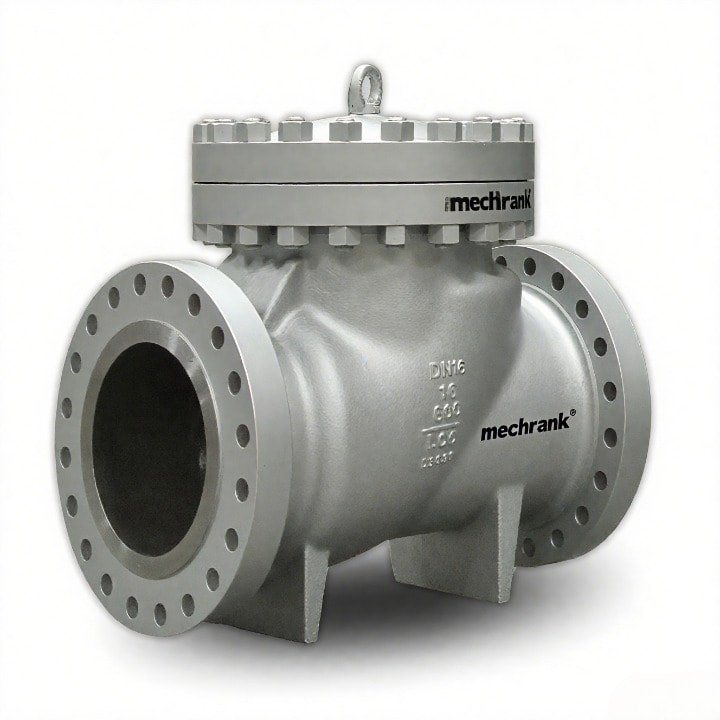
Criteria
When you pick a check valve, you need to think about a few key things. The right choice keeps your system safe and helps it last longer. Here are the main things to look at:
Material Compatibility: The valve’s material should work with your fluid. Stainless steel is good for acids. Urethane is best for slurries.
Pressure and Temperature Ratings: The valve must handle your system’s highest pressure and heat. If you use steam, pick a valve that can take high heat and pressure.
Connection Size and Type: The valve size should fit your pipe. This helps keep the flow steady and stops pressure drops.
Flow Rate and Valve Sizing: Pick a valve that matches your flow needs. If the valve is too big, it may chatter. If it is too small, it can block flow.
Certifications and Standards: Choose valves that meet rules like ASME or API.
Ease of Installation and Maintenance: Pick a valve that is easy to put in and fix.
Here is a simple chart to help you match valve materials to your fluid:
Material Type | Best For | Notes |
|---|---|---|
Stainless Steel | Acids, corrosive fluids | Very good at fighting rust |
Carbon Steel | Water, oil | Good for most uses |
Urethane | Abrasive slurries | Stands up well to wear |
PTFE | Aggressive chemicals | Great at resisting chemicals |
EPDM | Oxygen-rich, ozone environments | Works well with air and water |
Tip: Always check the valve’s material and ratings before buying. This helps stop leaks and early breakdowns.
Installation
Putting in a check valve the right way is very important. It keeps your system safe and working well. Always follow these steps:
Put the check valve in the same direction as the flow. Look for the arrow on the valve.
Place the valve on a straight part of the pipe. Try to have at least 10 pipe lengths after pumps or fittings, and 5 after elbows. This keeps the flow smooth and helps the valve last longer.
Do not put the valve too close to pumps or where the pipe size changes. Fast, rough flow can wear out the valve.
If you do not have much space, ask the valve maker for help with where to put it.
Check how the valve sits. Some types only work in pipes that are flat.
If you put in a check valve the wrong way, you could get reverse flow or water hammer. This can hurt your pumps and pipes. You might also see leaks or hear loud sounds. Always check your work to keep your system safe.
What Are the Applications, Advantages, and Disadvantages?
Applications of a technology or concept can vary widely, often including fields like healthcare, finance, and education. Each application area brings unique benefits and challenges.
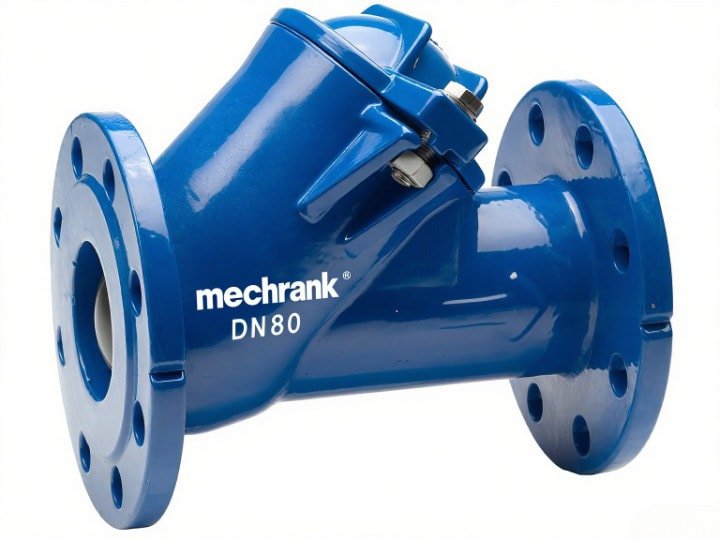
Applications
Check valves are used in many places and jobs. They help control which way fluids go and keep equipment safe. The table below shows where each type of check valve is used:
Check Valve Type | Typical Applications |
|---|---|
Swing Check Valves | Oil and gas pipes, water systems, power plants |
Ball Check Valves | Wastewater, mining pipes, food factories |
Lift Check Valves | High-pressure steam, boiler water, gas pipes |
Silent Check Valves | Tall building water, clean water pumps, medicine lines |
Dual Plate Check Valves | Ships, fire systems, heating and cooling |
Foot Valves | Pump intakes, wells, ponds, pools |
Diaphragm Check Valves | Low-pressure pipes, vacuum pipes |
You often find check valves in water plants, chemical factories, and building water systems. They also protect pumps in wells and stop water from going backward in fire systems.
Advantages
Check valves give you many good things in your system:
They keep your system clean by stopping dirty stuff from getting in.
They cut down on water hammer, so there is less noise and fewer broken pipes.
They help save energy by letting fluid move the right way.
They cost less to fix because they are simple and have few moving parts.
They help your equipment last longer and stop it from breaking down.
Tip: Spring-loaded and silent check valves close fast and smooth. This helps stop water hammer and keeps your system safe.
Disadvantages
There are some problems you should know about with check valves:
Fast opening and closing can wear out parts quickly.
They do not work well with thick or sticky fluids.
Pressure changes can make them leak.
High pressure can break the valve or the seal.
If the valve closes too fast or too slow, it can cause pressure spikes or damage.
You must put the valve in the right place to stop shaking and noise.
Always pick the right valve type and size for your system. This helps you stop early problems and keeps your system working well.
You need to pick a valve that fits your system. Think about what kind of fluid you have and how it moves. Make sure the valve size and material match your job. Put the valve in the right direction. Do not put it close to pipe bends or where the pipe gets smaller. Check and clean your valves often. This helps stop leaks and keeps things safe. If your system is tricky, ask an expert or read a good guide. This helps your valves work well.
Taking care of your valves and putting them in right makes them last longer and helps you avoid expensive problems.
FAQ
What happens if you install a check valve backward?
If you install a check valve backward, fluid cannot flow through your system. The valve blocks all flow. Always check the arrow on the valve body before you install it.
How do you know if a check valve is failing?
You might hear strange noises, see leaks, or notice shaking pipes. Sometimes, you see backflow or pressure drops. Regular checks help you spot problems early.
Can you use a check valve for gas as well as liquid?
Yes, you can use check valves for both gas and liquid. Make sure you choose the right material and type for your gas system. Always check the manufacturer’s guidelines.
How often should you inspect or maintain a check valve?
You should inspect check valves at least once a year. In harsh or dirty systems, check them more often. Look for leaks, wear, or stuck parts.

